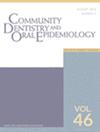Online Cognitive-Behavioural Intervention to Manage Dental Anxiety: A 12-Month Randomised Clinical Trial
Abstract
Objective
The study aimed to test the efficacy of an online cognitive-behavioural therapy dental anxiety intervention (o-CBT) that could be easily implemented in dental healthcare settings.
Methods
An online cognitive-behavioural protocol based on psychoeducation, exposure to feared dental procedures and cognitive restructuring was developed. A randomised controlled trial was conducted (N = 499) to test its efficacy. Consenting adult dental patients (18–75 years old) who met inclusion criteria (e.g., high dental anxiety) were randomised to one of three arms, (a) intervention assisted by psychology staff (PI) (n = 162), (b) intervention assisted by dental staff (DI) (n = 167), or (c) a control condition (C) (n = 170). Primary outcome measures were the Modified Dental Anxiety Scale (MDAS) and the Anxiety and Related Disorders Interview Schedule DSM-V (ADIS) rating of fear. Generalised linear models for repeated measures based on intention to treat analyses were used to compare the three groups on dental anxiety, fear, avoidance and overall severity of dental phobia.
Results
Dental anxiety was significantly lower in both PI and DI groups when compared to the control condition. Interestingly, reductions in dental anxiety favoured the DI group at 6 (p = 0.008) and 12 months only (p = 0.009). Overall, equivalency was observed between the two intervention groups (PI and DI), as there were no significant differences in dental anxiety when the dental arm was compared to the psychology arm across all time points (p > 0.05).
Conclusion
The online cognitive-behavioural intervention was efficacious in reducing dental anxiety when compared to a control condition in an urban sample of patients receiving treatment in a dental school setting. Examination of its effectiveness when administered in dental offices under less controlled conditions is warranted.
Trial Registration: NCT03680755


 求助内容:
求助内容: 应助结果提醒方式:
应助结果提醒方式:


